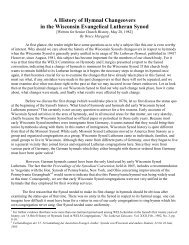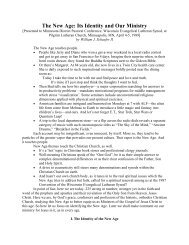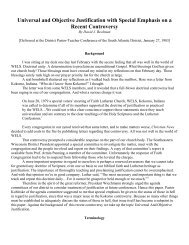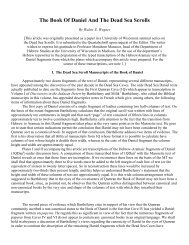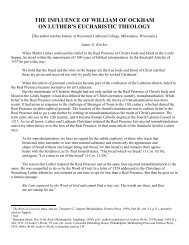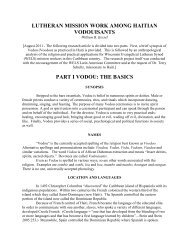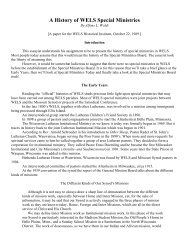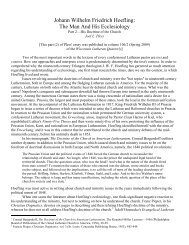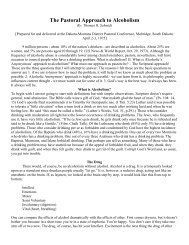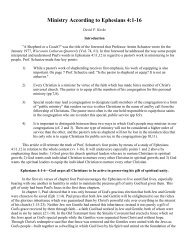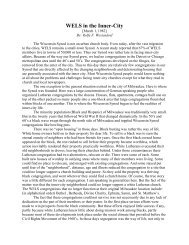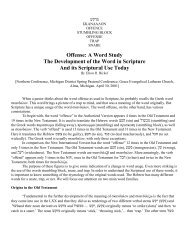Strangers to Sisters - Wisconsin Lutheran Seminary Library: Essays
Strangers to Sisters - Wisconsin Lutheran Seminary Library: Essays
Strangers to Sisters - Wisconsin Lutheran Seminary Library: Essays
You also want an ePaper? Increase the reach of your titles
YUMPU automatically turns print PDFs into web optimized ePapers that Google loves.
Part I: Getting <strong>to</strong> know the Scriptures: the Norwegian Hermeneutic and the<br />
Wauwa<strong>to</strong>sa Theology<br />
Chapter 1: The Norwegian Hermeneutic<br />
The Norwegian hermeneutical method that found active expression in the<br />
Norwegian Synod in America was born as a reaction <strong>to</strong> the rationalism of the Norwegian<br />
State Church on the one hand and the pietistic preaching of Haugean revival on the other.<br />
The method brought back the true confessional principle of Sola Scriptura <strong>to</strong> the<br />
Norwegian State Church, along with a deep appreciation for the <strong>Lutheran</strong> symbols and<br />
the his<strong>to</strong>ric practices of the <strong>Lutheran</strong> Church. This hermeneutical method would be<br />
deeply instilled in the founders of the Norwegian Synod; men like Herman Amberg<br />
Preus, Jakob Aal Ottesen, Ulrik Vilhelm Koren, who guided the Norwegian Synod<br />
through various doctrinal battles, especially the Election Controversy, with their clear,<br />
persistent call <strong>to</strong> the authority of Scripture.<br />
After the demise of the Norwegian Synod <strong>to</strong> the Madison Settlement of 1917 the<br />
leaders of the ELS began a careful re-examining of the events that led <strong>to</strong> the fall of their<br />
beloved church. 11 During this time, men like H.M. Tjernagel, J.E. Thoen, Bjug Harstad,<br />
Norman A. Madson, C.A. Moldstad, Christian Anderson and S.C. Ylvisaker would not<br />
only show that they stayed faithful <strong>to</strong> the sound <strong>Lutheran</strong> hermeneutical principle Sola<br />
Scriptura, but they would also zealously bring it <strong>to</strong> the fore in sermons, theological<br />
essays, and personal correspondence. The Norwegian Hermeneutic became all the more<br />
11 The Madison Settlement brought <strong>to</strong>gether the United Norwegian <strong>Lutheran</strong> Church and the Norwegian<br />
Synod, which had been his<strong>to</strong>rically separated over a number of issues, but most glaring, was the doctrine of<br />
election. The United Norwegian <strong>Lutheran</strong> Church taught that man is elected intuitu fidei, in view of faith,<br />
that is that God saw those who would believe and elected those. The Norwegian Synod strongly rejected<br />
this because it undermines Sola Gratia and makes man in some way responsible for part of his salvation,<br />
which is a subtle form of synergism. The Madison Settlement glossed over this difference with the<br />
explanation that both synods really held <strong>to</strong> the same doctrine, but in different forms. Only the minority that<br />
went on <strong>to</strong> form the Evangelical <strong>Lutheran</strong> Synod insisted that the merger was against the Scripture because<br />
it <strong>to</strong>lerated false doctrine.<br />
13



